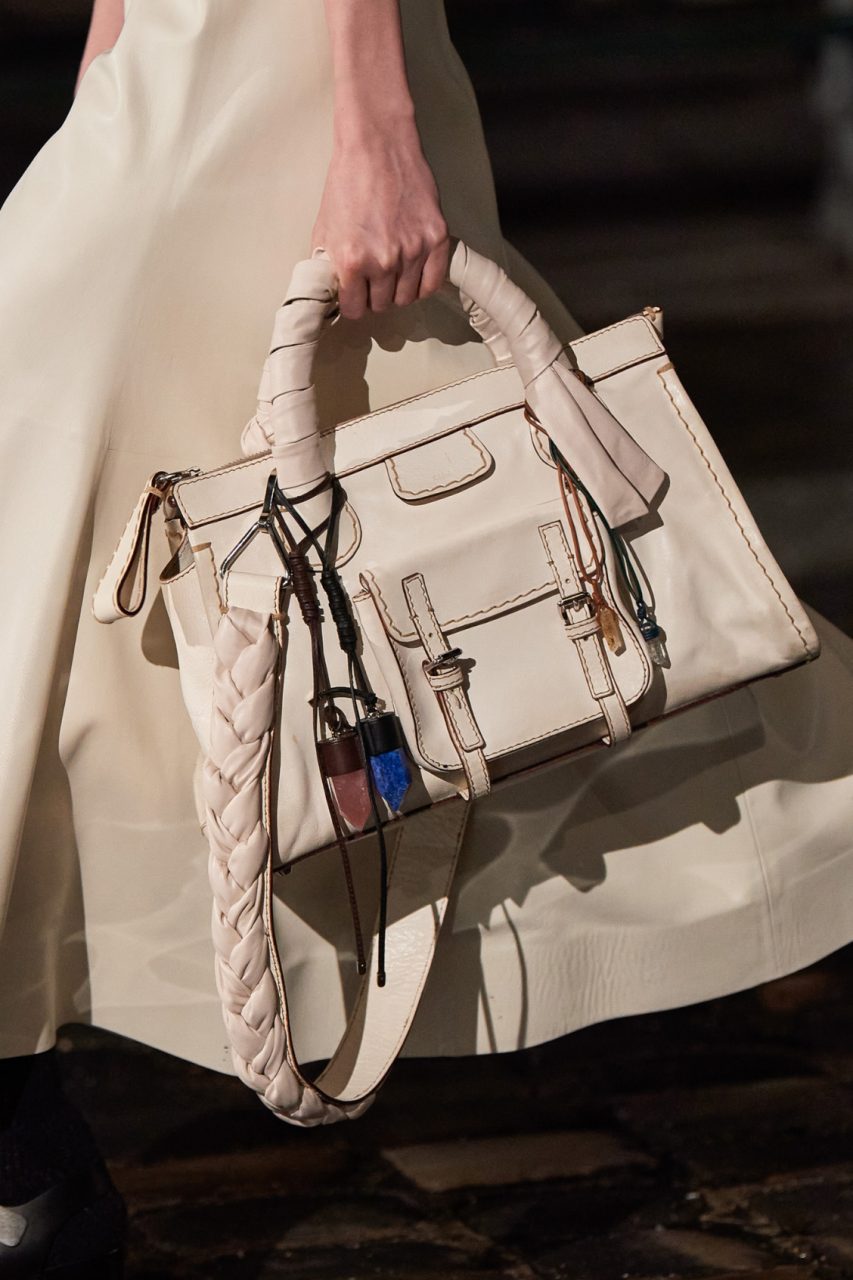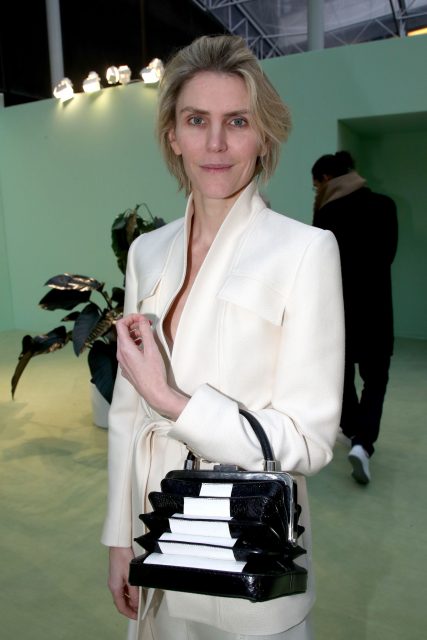Watching Gabriela Hearst’s first show for Chloé unfold was like seeing the child of two familiar people grow up before your eyes. Slowly, recognizable features from each set of genes morphed into one symbiosis that turned out quite attractive. (On paper it already seemed like it would, but like any lovechild, you can only really hope.) Hearst called her Chloé collection the “Aphrodite” to her own brand’s “Athena”: sensual and playful femininity versus a heroic and wise androgyny. While both were underpinned by Hearst’s signature earthy puritanism, her take on Chloé’s bourgeois bohemia was far more girly and kicky than the monastic modernism of her own brand.
Seizing an opportunity only the current Paris curfew could create, Hearst filmed her models striding out of Brasserie Lipp—where Chloé’s late founder Gaby Aghion presented some of her earliest collections—and across the cobblestones of Saint-Germain-des-Prés. It was very postcard, but far from Emily in Paris. On the contrary, this was a viable wardrobe for women created by a woman for a brand largely shaped by women, from Aghion herself to Phoebe Philo, Clare Waight Keller, Natacha Ramsay-Levi, and sustainable trailblazer Stella McCartney. Hearst is taking on a female-driven legacy in a time when male designers are suddenly fronting brands created by women.
That fact made the designer’s choice to only show dresses feel like a bit of a statement. Gaby and Gabi—as is Hearst’s nickname too—united in hand-spun ponchos native to both Chloé’s archives and its new designer’s Uruguayan heritage. She hybridized them with puffer collars, setting a patchwork-y tone for the collection reflected in collage-like scalloping, a nod to both Aghion and Aphrodite. It culminated in outerwear repurposed from Chloé overstock spanning designers and eras. Mega in every sense, the pieces were created with Sheltersuit, a nonprofit organization providing aid to the homeless, which also collaborated on a series of backpacks.
It was only the tip of the climate-centric iceberg in a collection borne out of altruistic sustainability and philanthropy measures too diverse to do justice in a few paragraphs. Those passions ran high for Hearst during a video preview from Paris: certified materials, circular economy, net-zero goals, herbicides and pesticides…. “I get into a subject and I forget about the clothes,” she said, interrupting herself when she was about to recount a Bill Gates op-ed on greenhouse gas emission. Rather than trying to disguise in frills and froth the sustainability that “got me the job,” she placed it center stage. Sustainability was Hearst’s way into the collection: her inspiration, her material, her technique, and even her silhouette.
Next to the Sheltersuit pieces, marble prints on blouses and dresses had been created by the artist Peter Miles using seaweed and eggs. The organic colors of by-product shearling and eco-leather outerwear had come to life through non-chemical processes. And new takes on the house’s classic Edith bag—the first bag Hearst ever bought—had materialized by repurposing old editions. Supported by her likeminded CEO Riccardo Bellini, Hearst said that Chloé had already decreased this collection’s environmental footprint by 400% compared to last winter’s line.
She used the house’s archival butterfly motif as appliqué on the back of a trumpet skirt, and on intarsia and macramé sweaters in recycled cashmere and merino, as a nod “to our insect world,” noting that pesticides used in unsustainable fabrics will mean certain death to ecosystems. Hearst’s efforts will resonate with the luxury neo-hippie eco warrior to whom her tenure at Chloé will doubtlessly cater. Showcasing a selection of healing-crystal necklaces, she said clients could choose between citrine, quartz, and rose quartz “depending on what chakra you want it to be.”
Editor
Anders Christian Madsen














